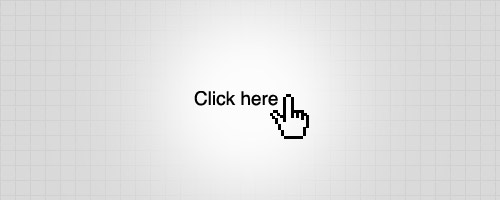Web 设计中的 5 个最具争议性的话题
来源:互联网 发布:数据库的几种实例 编辑:程序博客网 时间:2024/06/04 19:51
The world that surrounds the topic of Web Design is home to many debates and opinions on best practices or generally how things should and shouldn’t be done. While many of these opinions are accepted and taken on board by everyone, there are some that end up being split into two opposing camps. One camp will provide an expert opinion for one side of the argument, while the other contradicts with an equally valid argument. Let’s take a look at the five most popular debates; the ones that often end up developing into digital riots with opinions flying like arrows across the vast no-man’s land known as the comments section.
Should links open in a new window?

Camp one says:
Links to external sites should always open in new windows. There’s nothing more annoying than browsing a website, clicking a link and being whisked off to a totally new site, losing the page you wanted to revisit. Internal links should maintain the browser session in the current page, but anything that leaves the site should open in a new tab or window.
Camp two says:
As web designers we shouldn’t take the control away from the user. Whether a link needs opening in a new window is their choice. There’s nothing more annoying than a website taking control of my browser and opening a new tab or window for a link without my permission; if I wanted to open it in a new window, I’d do so! The problem only gets worse with inexperienced computer users, new windows break their trusty ‘back button’.
The mediator says:
In general, opening a new window should be avoided, but is recommended for some situations such as opening a help link in a shopping cart or opening a non-html document such as a PDF. To further aid the usability of your site, use a small icon to identify links that do open in a new window, or provide an options panel that’s configured with Javascript.
Further reading:
- Should Links Open In New Windows?
- Beware of Opening Links in a New Window”
- Open New Windows for PDF and other Non-Web Documents
Should links use the words ‘Click here’?

Camp one says:
‘Click here’ has been proven to provide a higher click through ratio than descriptive anchor text. ‘Click here’ is a call to action people associate with the web, so it should be used on links to achieve the highest click through results.
Camp two says:
Using the words ‘Click here’ hinders the usability of a site. Instead of being able to see where the link goes and what it does, the user has to read the surrounding text to gain an idea of what’s going to happen. Quality guidelines suggest that anchor text should explain what a link offers.
The mediator says:
A descriptive link should always be used to help increase your site’s usability, accessibility and optimization for search engines. It is be interesting to hear that ‘Click here’ performs better on banner ads, but I’d imagine that bounce rates would also be in favour of descriptive links.
Further reading:
- You should follow me on Twitter
- Don’t say ‘click here’; not everyone will be clicking
- Does Telling Someone to “Click Here” Work?
Should Bold <b> and Italic <i> tags be used?

Camp one says:
If your aim is to make a word bold, use the <b> tag. It’s not correct to use the <strong> tag if the word doesn’t have any extra value or importance. Screen readers pronounce the <b> and <i> tags differently, and they are also included in the HTML5 specification.
Camp two says:
Bold and italic tags are often used to make text appear bold or italic, so semantically anything that is being used for visual aesthetics should be reserved for the CSS stylesheet, and not included in the HTML markup. If an element has of specific importance or requires emphasis, the <strong> or <em> tags helps identify it with meaning.
The mediator says:
<b> and <i> tags shouldn’t be used to make text appear bold and italic for the sake of it being bold or italic, this visual styling should be left to the CSS. If a word or passage of text is of high importance, either the <strong> or <em> element would be the best use. The <b> and <i> can and should be used when no other tags fit the situation (eg: <cite>, <var>, <dfn>). An example might be text in another language.
Further reading:
- Semantic Use of Bold and Italic Elements
- When semantic markup goes bad
- A reconsideration—in defence of <b> and <i> (or: people fear what they don’t understand)
Should a logo be enclosed in a <h1> element?

Camp one says:
Logos shouldn’t be wrapped in a header one, the <h1> element should include a description or title of that particular web page. This is the best approach for SEO, otherwise the primary header for every page would be the same – the company name.
Camp two says:
The main identifier of what website you’re on is the logo. With the <h1> being the largest level of headers, it’s natural to place the logo and site title inside a <h1>. This way, when the page is viewed without CSS, it still holds the same visual structure and hierarchy.
The mediator says:
The definitive use for a <h1> is to describe the subsequent content. Therefore if a particular website has a title or heading that describes the content and appears in the design, this should be placed in the <h1>, otherwise the next highest structural and descriptive item would be the logo.
Further reading:
- Semantics in HTML: What’s in a Heading?
- Semantic uses of <h1>, <h2> … <h6> HTML tags
- The H1 Debate
A site should be viewable in IE6

Camp one says:
Internet Explorer 6 makes up 10% of the market share, so it’s crucial that a website is made to work in IE6, as well as newer browsers. There lots of major corporations who have large networks running IE6, as well as lots of computer users who don’t know how to upgrade.
Camp two says:
IE6 is considerably out of date and doesn’t support the technologies that are present in web design today. It’s poses a risk to the user’s online security and is the never ending nightmare for all designers. Large companies including YouTube are phasing out support, so should you!
The mediator says:
IE6 usage is definitely on the decline, and its death will be quicker with large websites dropping support. Whether you support IE6 depends on your own user statistics. Alternatively, consider offering more basic page styling to IE6 users rather than fixing complicated layout and CSS problems.
Further reading:
- How To Support Internet Explorer and Still Be Cutting Edge
- Do you support IE6?
- Universal Internet Explorer 6 CSS
Web 设计中的 5 个最具争议性的话题
在 Web 空前繁荣的今天,有关 Web 设计中的各种观点很多会成为话题,有的很快达成一致,有的则一直争议下去,本文讲述 Web 设计中的 5 大经典争议,这些争议从它们诞生的那天起,就被正反两方争得不亦乐乎。
争议之一:链接是否应该在新窗口打开

正方:
外部链接应该始终从新窗口打开,当你浏览一个站点的时候,点击了一个链接,却被带到另外一个站点,你在这个站点的会话也因此丢失,这实在令人恼怒。因此,站点内的链接可以在现有窗口打开,而站点外链接则应该在新窗口打开。
反方:
作为 Web 设计师,我们不该控制用户的行为,一个链接是否在新窗口打开,应该是用户自己的选择。剥夺用户的控制权,在用户的桌面上打开一堆窗口或标签,这才是真正让人恼怒的事。如果用户想打开新窗口,他们可以自己选择,而对非熟练用户,新窗口让他们丢失了后退按钮更让他们无所适从。
和事佬:
总体来讲,应该避免使用新窗口打开链接,但在某些场合,如打开购物车中的帮助链接,打开一个非 html 文件(如 PDF 文件),应该使用新窗口。为了提高易用性,最好在需要打开新窗口的地方,用一个小图标提示一下。
争议之二:在链接中应该使用诸如Click here 一类的笼统词汇吗?

正方:
事实证明,Click here 比描述性的链接更容易获得点击,因此应该使用该词汇以获得更好的点击率。
反方:
Click here 一类的链接损害 Web 的易用性,用户在点击之前,只能通过周围的上下文关系猜测这个链接是做什么的。Quality guidelines 建议,任何链接文字都应该明确描述该链接的目的。
和事佬:
为了提高站点的易用性,可访问性和 SEO 性能,应该始终使用描述性链接。很有趣听到有人说 Click here 比描述性链接可以获得更多点击率,不知道那些点击进来的人是不是看两眼就离开了。
争议之三:使用该继续使用 b 和 i 两个标签?

正方:
如果你仅仅想把一个词设为粗体,而这个词并没有强调表示重要的意思,应该使用 b 标签,不该用 strong 标签,读屏软件对 b 和i 标签有不同的发音,而 HTML5 规范中仍包含这两个标签。
反方:
这两个标签的作用是将文字设置为粗体或斜体,从语义角度看,任何装饰性的东西都应该使用 CSS 实现,如果要强调一个词语,应该使用 strong 或 em 标签。
和事佬:
b 和 i 标签不应该用于修饰文字的式样,这些视觉的修饰应该交由 CSS 处理。如果要强调一个词汇或语句,应该使用 strong 或 em 标签。只有在那些没有别的标签可用的场合,才可以考虑 b 和 i 。
争议之四:站点 Logo 是否因出现在 h1 标签中?

正方:
Logo 不应包围在标题标签中,标题标签应该包含这个页面的标题或描述性内容,这是 SEO 的最佳方式,否则,站点中的每个页的标题岂不是全变成公司名字了?
反方:
一个站点最明显的标志是它的 Logo, 而 h1 是一个页面最顶级的标题,将 Logo 包围其中很自然,这样,即使没有 CSS 人们也很容易该明白这个页面的结构。
和事佬:
标题标签的作用是描述内容的层级结构,如果一个站点有一个描述站点内容的标题,应该放在 h1 中,否则,第二级结构或描述性的对象,就是 Logo。
争议之五:是否应该支持 IE6?

正方:
IE6 现在仍占有 10% 的市场份额(在国内更高-译者注),因此,网站毫无疑问应该支持 IE6。世界上仍然有很多公司的系统仍需使用 IE6 访问,另外,还有很多人根本不知道怎么升级他们的浏览器。
反方:
IE6 已经过时,不支持最新的 Web 技术,它给在线用户带来安全隐患,也是众多 Web 开发设计师的噩梦。包括 YouTube 在内的大型站点已经停止支持 IE6。你也不例外。
和事佬:
IE6 毫无疑问在衰退,随着大公司对它的抛弃,它的死亡可能来得比预期还快,是否支持 IE6 要看的具体情况,可以考虑为 IE6 用户提供最基本的页面格式,而不必为它挣扎。
本文来源:http://line25.com/articles/top-5-web-design-debates-that-cause-the-most-riots
中文编译来源:锐商企业CMS 网站内容管理系统 官方网站
- Web 设计中的 5 个最具争议性的话题
- Web 设计中的 5 个最具争议性的话题
- Web 设计中的 5 个最具争议性的话题
- Web 设计中的 5 个最具争议性的话题
- Web 设计中的 5 个最具争议性的话题
- Web 设计中的 5 个最具争议性的话题
- Web 设计中的 5 个最具争议性的话题
- Web设计中的5大经典争议
- Web设计中的5大经典争议
- Web设计中的5大经典争议
- “争议话题”事件营销成败与否的关键
- 今年最具争议的8个Java话题
- OpenJDK源码研究笔记(十五):吐槽JDK中的10个富有争议的设计
- 争议话题:选择JSF不选Struts的十大理由
- 话题与评论的设计讨论
- 产品主流程设计中容易出现的一个争议
- 竞价排名中的道德争议
- 中国历史中最具争议性的美女
- 手势搜索(Gesture Search)
- 如何装虚拟机及在上面安装LINUX操作系统
- Oracle Database 10g:为 DBA 提供的最佳特性-前1到4周(转贴)
- 如何在win2003下安装sql2008
- Studying note of GCC-3.4.6 source (10 cont1)
- Web 设计中的 5 个最具争议性的话题
- unix的sed 用法介绍
- SYN-COOKIE
- 大幅优化MyEclipse的速度
- VB coding
- 汉语拼音—韦氏拼音对照表
- Windows 2003搭建虚拟主机服务器(转)
- SYN-PROXY
- Studying note of GCC-3.4.6 source (10 cont2)


